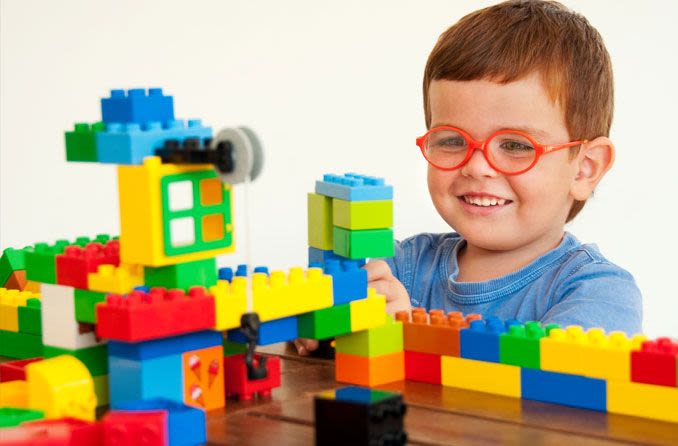Vision problems of preschool children

During the preschool years from ages 3 to 6, your child will be fine-tuning the vision and visual skills he already has developed during the infant and toddler years.
Preschool vision tasks vary with a child's age and activities. For example, many young preschoolers are learning to ride tricycles and master the complex eye-hand coordination needed to pedal, steer and watch where they're going at the same time.
Older preschoolers are learning how to integrate vision and body motions (motor skills) by playing sports such as softball and soccer (keep your eye on the ball!), and working on the fine motor skills needed to write their names.
Warning signs
If you have children between the ages of 3 and 6, be aware of these warning signs of possible preschool vision problems:
Consistently sitting too close to the TV or holding a book too close
Squinting
Tilting the head to see better
Frequently rubbing eyes, even when not sleepy
Shielding eyes or other signs of
Excessive tearing and
Closing one eye to read, watch TV or see better
Avoiding activities that require near vision, such as coloring or reading, or distance vision, such as playing ball or tag
Complaining of headaches or tired eyes
Schedule an appointment with an eye doctor if your preschooler exhibits any of these signs.
Refractive errors
The most common preschool vision problems are refractive errors:
Farsightedness is common in young children. If uncorrected, significant farsightedness can lead to strabismus and amblyopia ("lazy eye").
Nearsightedness (myopia) is another common preschool vision problem. Myopia causes distant objects to be blurry, like writing on a chalkboard in a classroom.
Astigmatism causes blurry or distorted vision at all distances.
Refractive errors affecting young children typically can be fully corrected with eyeglasses.
The First Eye Exam
Even if your child exhibits no symptoms of a refractive error or other preschool vision problems, he should have an eye exam by the age of 6 months, again at age 3 years, and also prior to starting school.
Having a complete eye exam before your child enters school allows enough time to catch and correct any vision problems that may interfere with learning.
FIND A DOCTOR: Don't let poor vision affect your child's life. Find an eye doctor near you for an appointment.
Children who need vision correction because of refractive errors should have annual eye exams throughout their school years to evaluate any changes.
During preschool and the school years, your child's visual system is developing along with the rest of her body, so annual eyeglass prescription changes are common. Read more about children's eye exams and how often they're needed.
Make sure your child receives a comprehensive eye exam from an eye doctor, not just vision screenings from school nurses or pediatricians.
Vision screenings may help spot problems, but they often miss them, too, because they are not comprehensive and and vision exams performed by an eye care professional. Vision screenings typically are administered by people who are not trained to detect and diagnose all vision and eye health problems.
SEE ALSO: The Problem With Vision Screenings
Motivating your child to wear glasses
If your child needs eyeglasses, get him involved in selecting them. If he helps choose the frame, he will be more motivated to wear the glasses.
Also, explain the benefits of the glasses to him, using specific examples — such as, "Your new glasses will help you see the ball better when you play catch."
Schedule the eye exam and glasses selection at a time that's good for your child. As you know, some kids are more focused early in the day, while others come to life after lunch or an afternoon nap.
Don't visit the eye doctor when your child is tired, cranky or hungry.
When choosing frames, select a few styles for your child with the help of an experienced optician. Then give your child the final choice of the glasses he'll wear.
Make the selection process a positive event, discussing how lots of people he knows wear glasses, and how they see much better.
Make sure the frames you choose are fitted properly for your child and are comfortable. No one, especially a child, will wear uncomfortable glasses.
Page published on Friday, January 3, 2020






